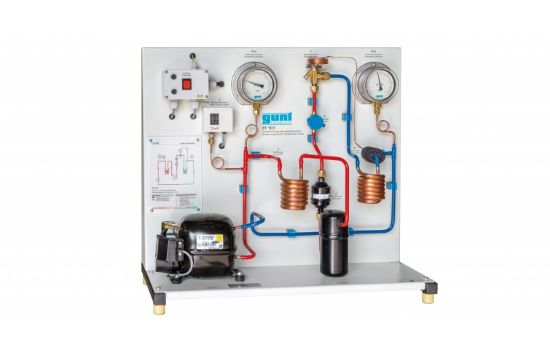The GUNT Simple Compression Refrigeration Circuit demonstrates the principles of a refrigeration system used to cool materials and products, such as food.
Product Features
- Refrigeration system with four main elements: compressor, condenser, expansion element, and evaporator
- Evaporator and condenser designed as pipe coils immersed in water tanks simulating the environment
- Thermostatic expansion valve serves as the expansion element
- Two manometers indicate high and low system pressures with evaporation temperature scale
- Thermometers measure water temperatures in the tanks
- Sight glass shows the refrigerant’s aggregate state upstream of the expansion valve
- Enables calculation of heat removed and added to the environment
Benefits
- Clear visualization of the refrigeration cycle in a simple compression system
- Hands-on learning of refrigeration principles including heat transfer and phase change
- Ideal for educational and training laboratories
Why Choose the GUNT Simple Compression Refrigeration Circuit?
This unit provides a practical and comprehensive understanding of refrigeration processes, essential for HVAC education and refrigeration technology training.

